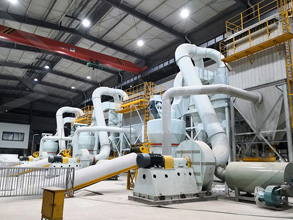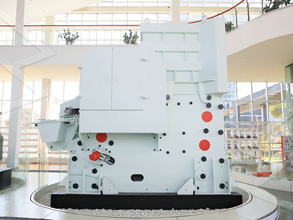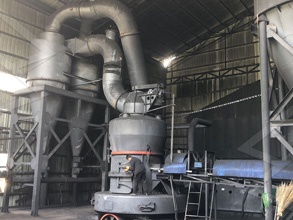

Antimony is chalcophile, occurring with sulfur and the heavy metals, lead, copper, and silver Over a hundred minerals of antimony are found in nature Stibnite (Sb 2 S 3) isAntimony is a native element that can occur in a natural state, but it is rarely pure It almost always contains some arsenic, and may also contain traces of silver, iron, and sulfur OnAntimony: The mineral native Antimony information and

Antimony is not an abundant element but is found in small quantities in over 100 mineral species It is most often found as antimony(III) sulfide It is extracted by roasting the2022年4月12日· Geologically, native antimony is rare, and it is mostly found in sulfide ores The main ore minerals of antimony are antimonite and jamesonite The extensiveAvailability, Toxicology and Medical Significance of Antimony

Relation to Mining Antimony rarely occurs in its native metallic form in nature It easily combines with other elements, usually including sulfur, to form over 100 different minerals Of these minerals, only stibnite2012年1月1日· Antimony (Sb) is a naturally occurring metalloid element It can exist in a variety of oxidation states (−III, 0, III, V), but is mainly found in two oxidation states (IIIAntimony | SpringerLink

2014年12月17日· Antimony is poisonous by inhalation and ingestion, and it has also been found to be carcinogenic 1, although the exact mechanisms of its toxicity are still unclearRobert Harding World Imagery / Alamy Antimony is poisonous by inhalation and ingestion, and it has also been found to be carcinogenic1, although the exact mechanisms of itsAll manner of antimony Nature

Antimony Antimony is a silverygray, brittle semimetal with atomic number 51 It rarely occurs in nature as a native element, but is found in a number of different minerals, the most important of which is stibniteDescription Named from the Greek words meaning “not alone,” antimony is a metalloid element that is primarily found as a very brittle, bluishwhite metallic substance It is unreactive to air, acids or bases The most important use for antimony in fireretardant chemicals that are added to plastics and textiles, especially for children’sAntimony Minerals Education Coalition

3 天之前· It occurs chiefly as the gray sulfide mineral stibnite Antimony, a metallic element belonging to the atomic number: 51: atomic weight: 12176: melting point: 6305 °C (1,1669 °F) boiling point: 1,380 °CAntimony: isolation Isolation: it is not usually necessary to make antimony in the laboratory as it is commercially available Antimony is found in nature in a number of minerals including stibnite (Sb 2 S 3) and ullmanite (NiSbS) Small amounts of native antimony have been found Some ores are treatable under reducing conditions to formWebElements Periodic Table » Antimony » the essentials

Encyclopædia Britannica, Inc Antimony is a metallic element of the nitrogen family A bright silverywhite metal, antimony is found in nature chiefly in the gray mineral stibnite Because antimony expands upon solidification, it is useful in combination with other substances as an alloy ingredient in type metal and castings2016年9月1日· Antimony (Sb, atomic number 51) is found in Group 15 of the Periodic Table directly below arsenic and has a standard atomic weight of More than 200 antimony minerals are found in nature, although it is important to note that the former has yet to be confirmed to be a naturally occurring mineral (Diemar et al, 2009, Selim,Antimony in the metallurgical industry: A review of its chemistry

The two naturally occurring isotopes of antimony are Sb121 and Sb123 The table below shows the atomic mass and percent natural abundance for these isotopes Antimony and sulfur are both found in the mineral stibnite, Sb2S3 To obtain antimony, stibnite is roasted (heated in air), producing oxides of antimony and sulfur2017年4月9日· found i n a number of different minerals, the most important of which is stibnite (SbS3) Antimony is often called as a semimetal, because in pure form it is not shiny and malleable l ike the(PDF) Economic Minerals of India ResearchGate

Mineral Crystals of serandite, natrolite, analcime, and aegirine from Mont SaintHilaire, Quebec, Canada In geology and mineralogy, a mineral or mineral species is, broadly speaking, a solid substance with a fairly welldefined chemical composition and a specific crystal structure that occurs naturally in pure form [1] [2]A total of perhaps 10,000 minerals may be found naturally on earth, The number of known minerals grew by 25% after 2000, similar to antimony, sixseven miles inland from the headwaters of Aquia CreekMinerals of Virginia

2022年4月12日· 2 Mineralogy, Geochemistry, and Availability of Antimony It is necessary to understand the geological properties of antimony in order to properly assess the impact of related geological processes on public health [28,29]Antimony exists naturally in the Earth’s crust and is released into the environment via both natural and mining–industrialElement Antimony (Sb), Group 15, Atomic Number 51, pblock, Mass 121760 Sources, facts, uses Antimony is not an abundant element but is found in small quantities in over 100 mineral species It is most often found as antimony(III) sulfide It is extracted by which occurs naturally as the mineral stibnite, was used as mascara andAntimony Element information, properties and uses | Periodic

2020年11月21日· Beryllium is a chemical element with atomic number 4 which means there are 4 protons and 4 electrons in the atomic structureThe chemical symbol for Beryllium is Be Beryllium is a hard, grayish metal naturally found in mineral rocks, coal, soil, and volcanic dust The commercial use of beryllium requires the use of appropriateDefine specific gravity a number that compares that objects density to the density of water Consists of compounds made with the elements fluorine, chlorine, bromine, iodine, or astatine Study with Quizlet and memorize flashcards containing terms like Minerals, Silicates, Define specific gravity and moreScience 31 Flashcards | Quizlet

2023年12月22日· Antimony, an SB element is described as a chemical element A lustrous gray metalloid is found mainly in nature as the sulfide mineral stibnite (Sb 2 S 3) It is naturally found in Earth’s crust layer in the ores of stibnite and valentinite The Antimony symbol is, Sb, and the antimony atomic number is 51 Environmental EffectsAntimony is silverygray in color, and a brittle, semimetal that is found in other minerals, in compound forms Antimony is called semimetal because in pure form, it isn’t shiny and malleable The name antimony is derived from the Greek words “anti” and “monos”, which means not alone The reason is it rarely occurs naturally in pureThe Mascara in Historical Antimony Essence of Mineral Makeup

Antimony is a silverygray, brittle semimetal It rarely occurs in nature as a native element, but is found in a number of different minerals Antimony is used principally for flame retardants as well as in ammunition and automotive batteries and as a decolorizing agent in glassmaking Asbestos Asbestos is a class of minerals that can be2020年1月1日· We found that antimony promotes structural transformations in secondary iron minerals, and that antimony is then further immobilised by the newly formed iron mineral phasesEfficient removal of antimony with natural secondary iron minerals

2022年1月1日· 21 Geogenic sources Sb is found throughout various environmental compartments (eg, soil, water, air), and in most biota (Fort et al, 2016, Hiller et al, 2012)Compared to other elements occurring in the earth’s crust, the abundance of Sb is low, ranging from 02 to 03 μg g −1The abundance of Sb in rocks is usually between 022015年1月5日· Antimony is the 63rdmost abundant element in Earth’s crust It is less abundant than tin, arsenic and the rare earths, but more so than bismuth, mercury and silver Antimony tends to concentrate in sulfide ores along with copper, lead and silver It occurs sparingly as a free element, but when it does it is usually in association withMineral Resource of the Month: Antimony EARTH Magazine

2012年7月17日· DOI: 101016/JCHEMER201201005 Corpus ID: ; Secondary antimony minerals: Phases that control the dispersion of antimony in the supergene zone @article{Roper2012SecondaryAM, title={Secondary antimony minerals: Phases that control the dispersion of antimony in the supergene zone}, author={Adam J Roper and2018年8月1日· Antimony (Sb) is a toxic element and a global environmental contaminant (Shotyk et al 2005) that is found throughout the environment as a result of natural processes and human activitiesSb occurs naturally at trace levels in the environment with an estimated abundance of 02~03 mg·kg −1 in the earth crust (Filella et al 2002)SbDistribution and migration of antimony and other trace Springer

2013年12月27日· Antimony has a range of industrial uses in batteries, chemicals, ceramics and glass but by far the most important is in fire retardants The economically most important ore mineral and principal source for the production of antimony is stibnite Majority of antimonybearing ore deposits are associated with the subductionrelated westernWho discovered antimony The antimony is a mineral of which ancestral data are available since it is even mentioned in the Old Testament, although possibly, the settlers of the epoch didn’t know it in metallic state, and it was confused with its SulphurThere is no specific person who has discovered it, but its different properties were described around the yearAntimony | What is it, characteristics, history, properties, what is it

2023年11月23日· Calcium intake is vital for a number of important functions When you consume this mineral, it can stimulate blood clotting, regulate hormones, support the nervous system, and ensure proper muscle contraction Research suggests that being deficient in calcium in the long term can result in brittle bones (osteoporosis), brian2013年7月24日· Antimony (Sb) emissions to the environment are increasing, and there is a dearth of knowledge regarding Sb fate and behavior in natural systems In natural systems, the presence of competitive anions may compete with Sb for adsorption sites on mineral surfaces, hence increasing its potential bioavailability Accordingly, the adsorption ofAntimony adsorption on kaolinite in the presence of Springer

2016年9月27日· Part of the list of all Antimony Minerals Group is Cu2Sb8S7 — Color, grayish or grayish black; powder, grayish or grayish black, sometimes inclining to brown or reddish; luster, metallic; H = 3 to 4; G=44 to 51; no cleavage; composition, about 52% copper, and, in addition to the antimony and sulphur, sometimes mercury or silver, alsoSubstance name: Antimony & compounds CASR number: Molecular formula: Sb Synonyms: Stibium, Regulus of antimony, Antimony regulus, Antimony black, Because antimony is found naturally in the environment, the general population is exposed to low levels of it every day, primarily in food, drinking water, and airAntimony and compounds DCCEEW

Minerals form when atoms bond together in a crystalline arrangement Three main ways this occurs in nature are: 1) precipitation directly from an aqueous (water) solution with a temperature change, 2) crystallization from a magma with a temperature change, and 3) biological precipitation by the action of organisms
